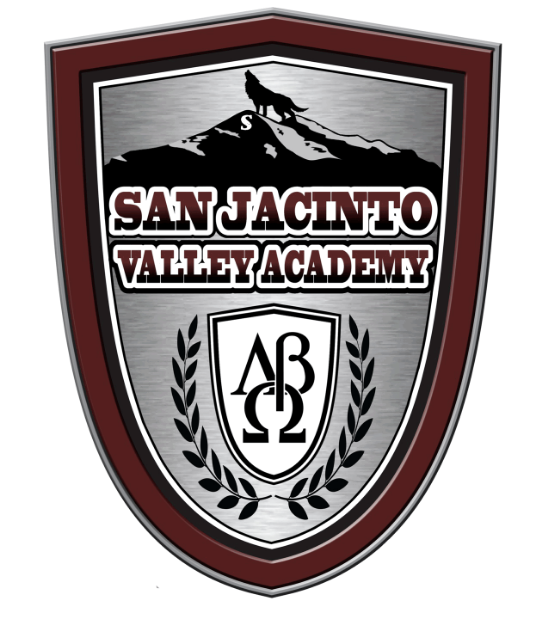School Language Policy
School Language Policy
Elementary
San Jacinto Valley Academy believes that language is an important part of a child’s development. Language helps establish social relationships, it becomes part of a student’s identity, and it is essential to the learning process. All teachers are language teachers, and all are responsible for facilitating communication. San Jacinto Valley Academy students come with a variety of home languages (mother tongues) and our student population reflects a diverse group of learners. Our Language Policy addresses the needs of our students, our teaching philosophy, and support for students learning a second language while respecting their primary language and culture. Our goal is to teach language in all classrooms as it is our primary means of learning and communicating. English is our primary language of instruction with Spanish as our selected second language and instruction begins in kindergarten as a push-in course. Instruction continues through elementary and middle school with eighth graders completing Spanish 1. Incoming high school students are offered an online Spanish 1 course to allow full participation in the IB Spanish courses.
Language acquisition is promoted through classroom instruction, academic and extra-curricular events, and excursions. Students are provided with real-life opportunities to use Spanish in our community.
Instruction focuses on oral and written communication. Assessment informs teaching by directing support, enrichment, and refinement of skills. Assessment practices are in place to measure the student understanding of material presented and to inform instruction direction and methods. The assessments may take many forms: written, digital, musical, theatrical, creative, oral, and other ways not listed here. The variation in assessment allows for those whose first language is not English, to present in a way which supports learning without the confinements of having a strong command of the English language. Students in all grades may also present learning in their Mother Tongue if so desired.
Primary home language (mother tongue) is supported on campus with native speakers of Spanish, Hindi, Vietnamese, Chinese, and Arabic in all roles, classified, certificated, and administration. Students have access to translation programs online. Students in need of English support are provided time during the instructional day and through after school programs to work with SJVA staff in the areas of core subject support. All students who speak a language, other than English as their first language, are supported by a language coach. The language coach provides instructional assistance to staff, ensures that all faculty are aware of who their English Learners are, provide assessment support, and work directly with the families to development a plan of support for students.
San Jacinto Valley Academy recognizes the importance of developing a student’s mother-tongue language in promoting personal identity, cultural heritage, intellectual growth, and academic success. Students whose primary language is not English are supported and encouraged to continue to study and develop their mother tongue. The support for mother tongue is established in a variety of ways with examples listed below:
- SJVA celebrates the cultural diversity on our campus through community events. One example of a community event is our “Multicultural Night.” Students, staff, families, and community members are invited to attend an on-campus celebration of the many cultures represented at SJVA. The evening includes food samples, songs, dances, clothing, and exhibits which represent different countries and/or
- Classroom libraries are included in each elementary classroom. Each one of our classroom libraries include multicultural/mother tongue reading material which are selected based on our home language surveys returned to us at the start of each school
- SJVA staff members continue to work with parents and students to seek opportunities to share cultural and language experiences through learning opportunities presented in the PYP Units of Study and Inquiry Fair
- SJVA employs a diverse staff who speak a variety of languages which include, but are not limited to, the following: English, Spanish, Vietnamese, Arabic, and Chinese. Having a multi-lingual staff is essential in the communications with parents whose first language is not
- SJVA provides Spanish translations in writing for newsletters, class projects, Student Study Team documents, IEPs, and report cards. Translators are utilized during conferences, parent trainings, IEPs/SSTs, and
San Jacinto Valley Academy uses English as the primary language of instruction. Students identified as Limited English Proficient are identified using the English Language Proficiency Assessments for California (ELPAC). Placement in the English Language Development (ELD) program occurs for students to receive additional support in class, during enrichment, and through intervention courses. Students are assessed yearly and reclassified out of the program using site and state criteria. Teachers at San Jacinto Valley Academy are Cross-cultural, Language, and Academic Development (CLAD) certified.
Specially designed academic instruction in English (SDAIE) strategies are utilized is content areas to improve student language acquisition with students who are still learning English.
This policy is reviewed by stakeholders regularly (at a minimum, annually in the fall and spring of each school year) to meet the needs of our learning community.

